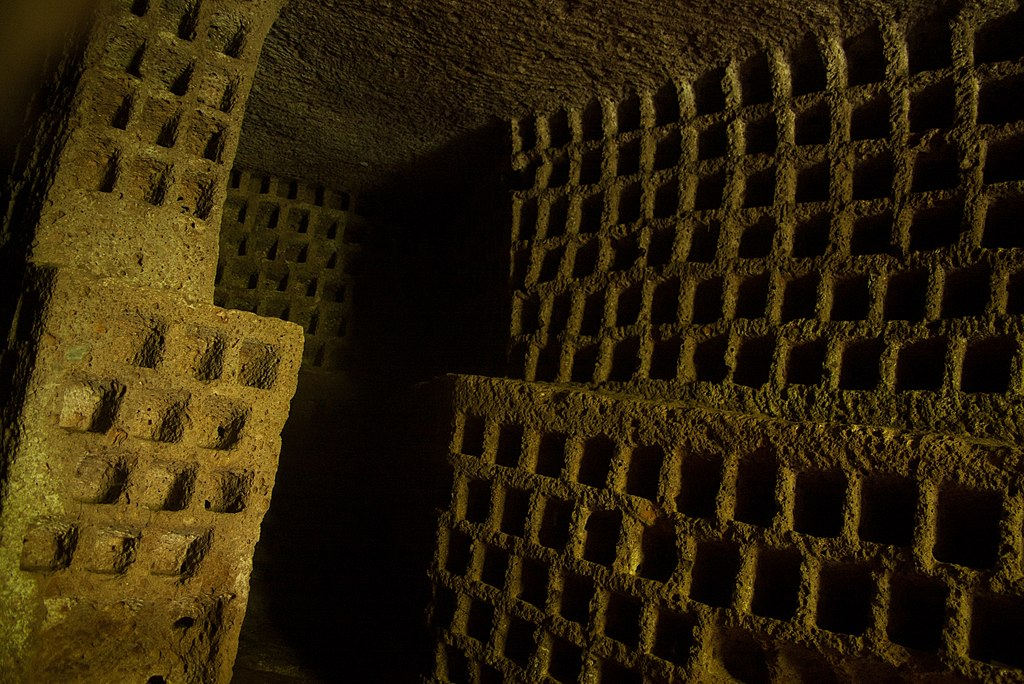
A columbarium is a structure for the reverential and usually public storage of funerary urns holding cremains of the dead
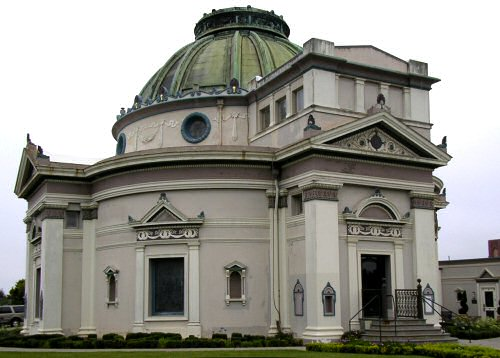
A columbarium (pl. columbaria) is a structure for the reverential and usually public storage of funerary urns holding cremains of the dead. The term comes from the Latin columba (dove) and originally solely referred to compartmentalized housing for doves and pigeons, also called dovecotes.
- “Definition of ‘columbarium'”. Collins English Dictionary. HarperCollins Publishers. Retrieved 8 February 2019.
Background
Roman columbaria were often built partly or completely underground. The Columbarium of Pomponius Hylas is an ancient Roman example, rich in frescoes, decorations, and precious mosaics.
- Toynbee, J M C (1971). Death and Burial in the Roman World. Johns Hopkins University Press. pp. 113–118.
- Ancient Roman underground columbariums included: Columbarium of Statilii, Columbarium of Volusii, Columbarium of Livia, Columbarium of Pomponius Hylas, Columbarium of Lucius Arruntius, Columbarium of Iunius Silanus, Columbarium of Nero Claudius Druscus, Columbarium of Marcella, Columbarium of Carvilii, Columbarium of C. Annius Pollio, Columbarium of Caecilii, Columbarium of Passienii, Columbarium of Bruttii, Columbarium of L. Caninius Gallus, Columbarium of L. Abucii, Columbarium of Q. Sallustii. Further reading in Pavia, Carlo. Guide to Underground Rome: From the Cloaca Maxima to the Domus Aurea: the Most Fascinating Underground Sites of the Capital. English translation by Darragh Henegan. Rome: Gangemi, 2000. ISBN 88-7448-994-3
Today’s columbaria can be either free standing units, or part of a mausoleum or another building. Some manufacturers produce columbaria that are built entirely offsite and brought to a cemetery by large truck. Many modern crematoria have columbaria. Examples of these are the columbaria in Père Lachaise Cemetery in Paris and Golders Green Crematorium in London.
In other cases, columbaria are built into church structures. One example is the Cathedral of Our Lady of the Angels (Los Angeles, California), which houses a number of columbarium niches in the mausoleum built into the lower levels of the Cathedral. The construction of columbaria within churches is particularly widespread in the Czechoslovak Hussite Church. An example can be seen at the Church of St Nicolas in Old Town Square (Prague). In the Roman Catholic Church, although traditional burial is still preferred, cremation is permitted provided that the cremated remains are entombed and that the cremation is not done for reasons contrary to the Catholic faith. As a result, they are within some Catholic cemeteries.
Columbaria are often closely similar in form to traditional pagodas which function as in-situ columbaria pavillions at Buddhist temples, which from ancient times have housed cremated ashes. In Buddhism, ashes may be placed in a columbarium (in Chinese, a naguta (“bone-receiving pagoda”); in Japanese, a nōkotsudō (“bone-receiving hall”), which can be either attached to or a part of a Buddhist temple or cemetery. This practice allows survivors to visit the temple and carry out traditional memorials and ancestor rites.
Gallery
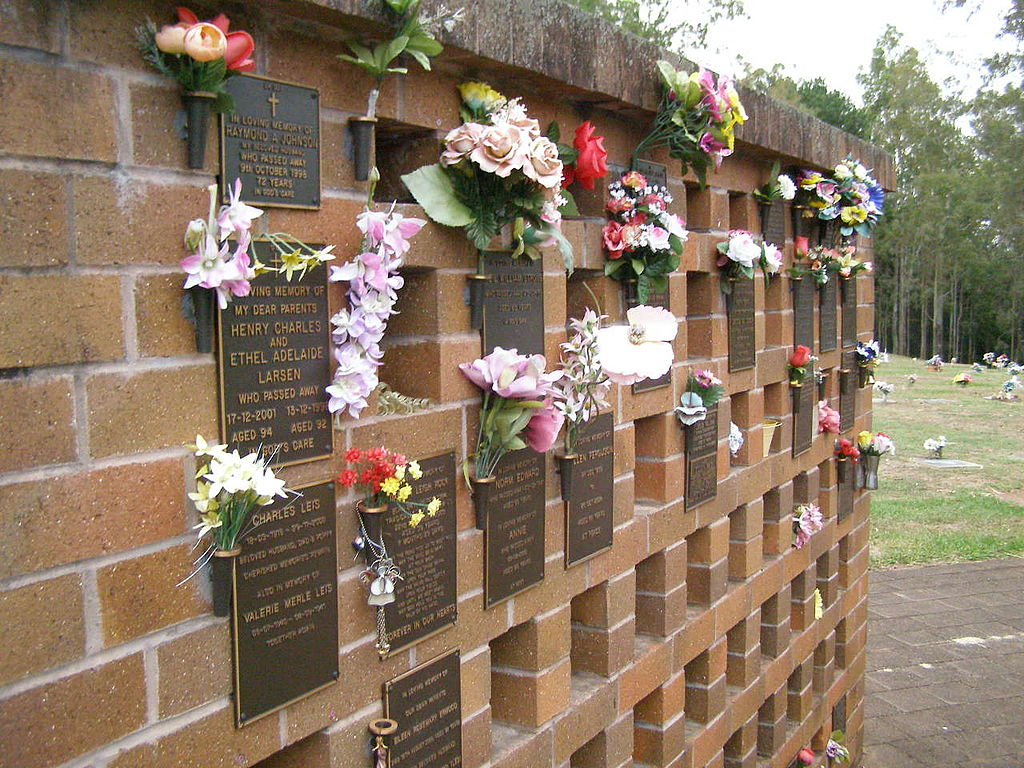
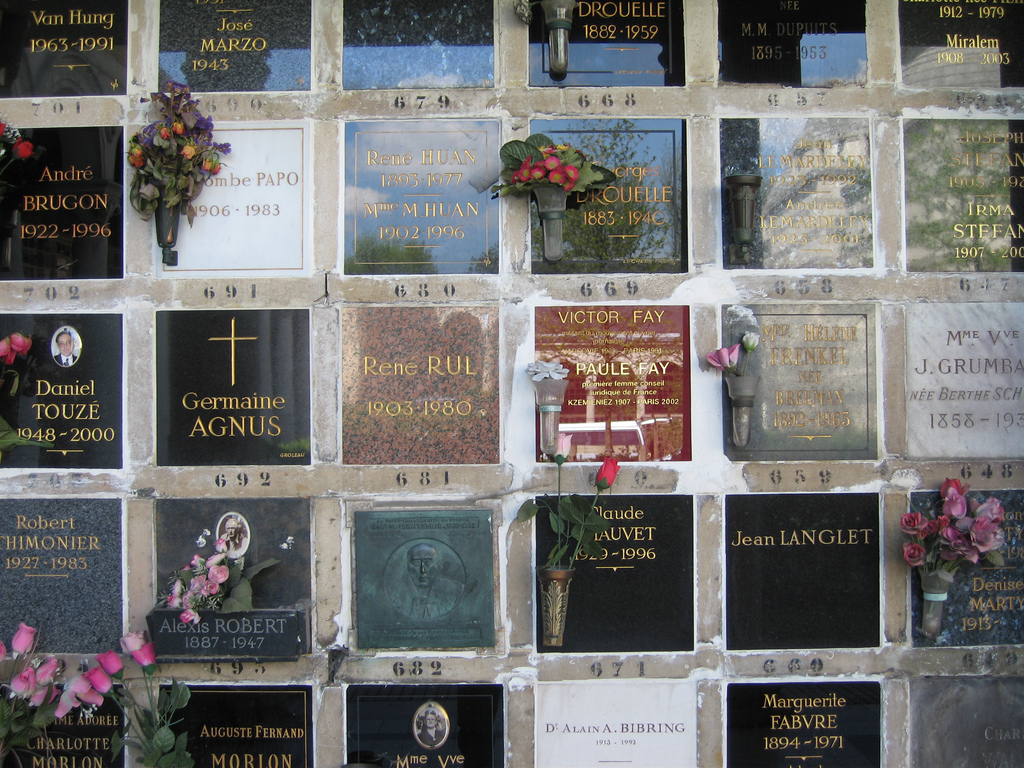
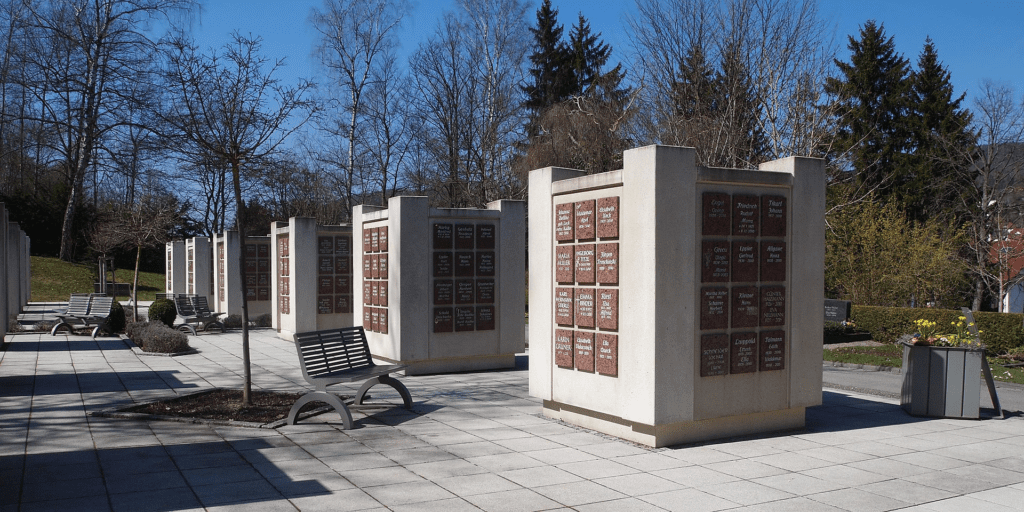
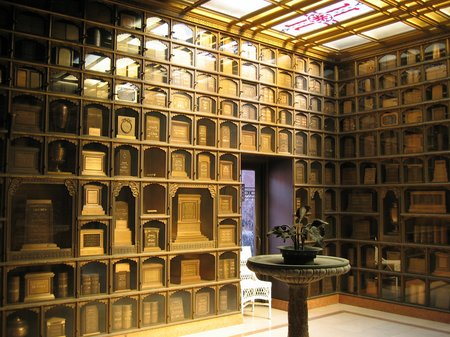
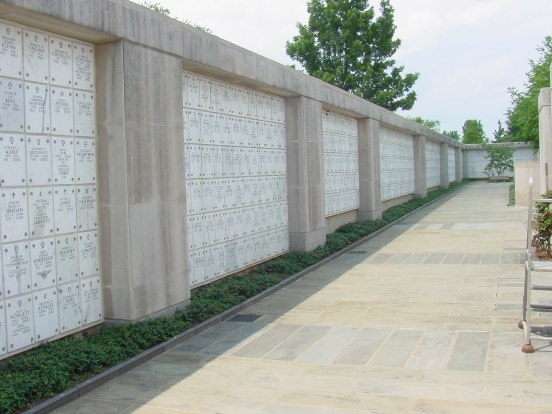
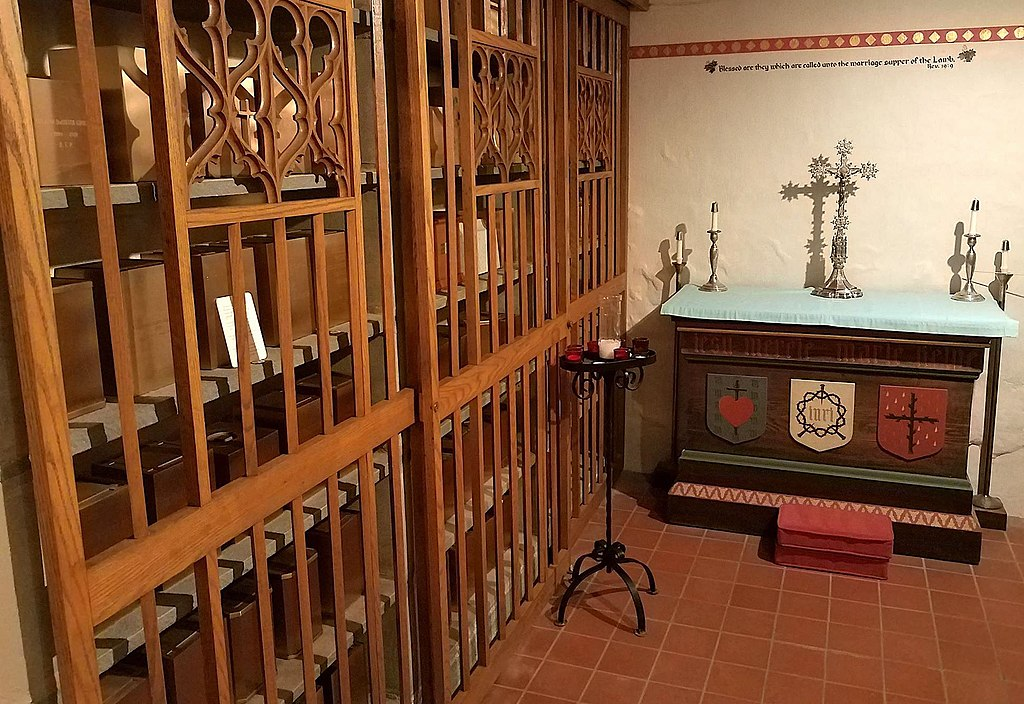
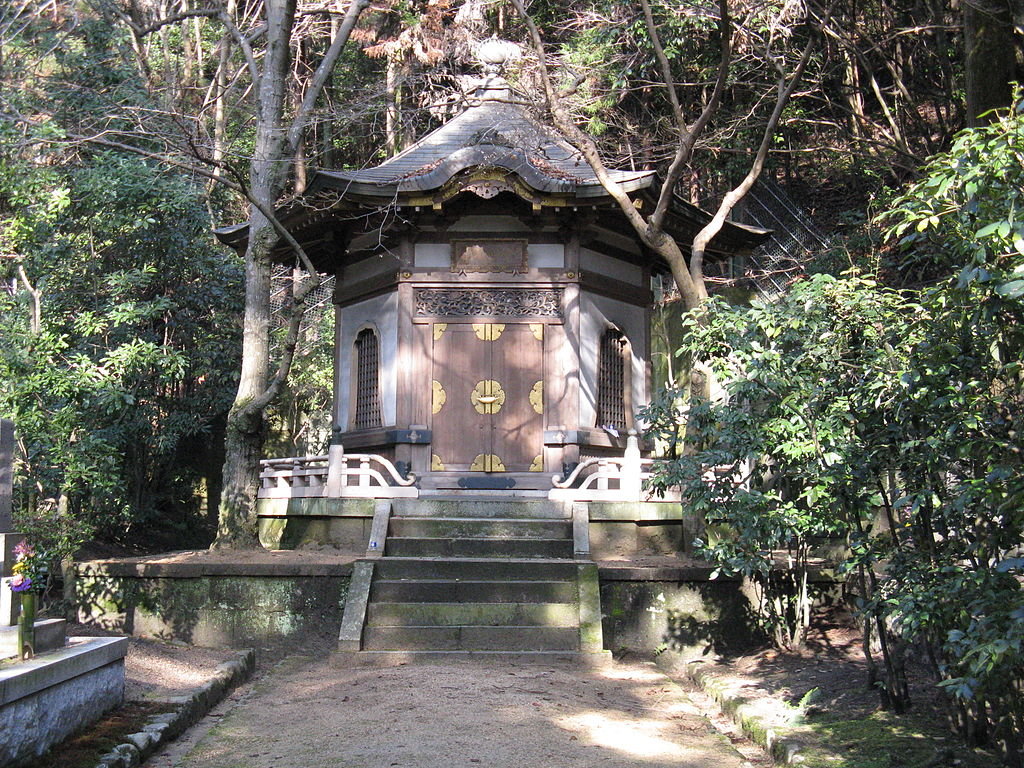
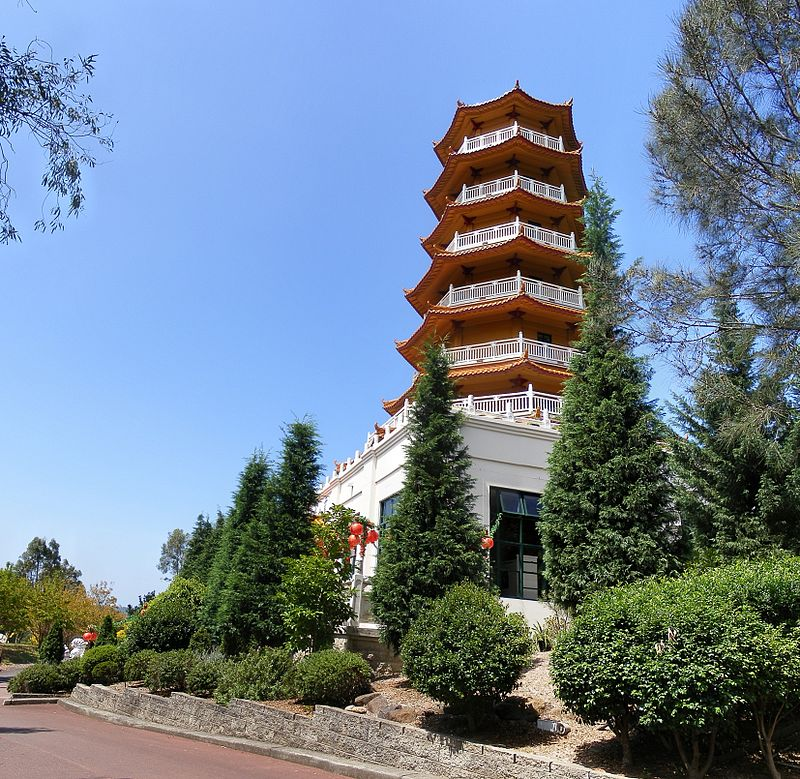
Caves in Israel
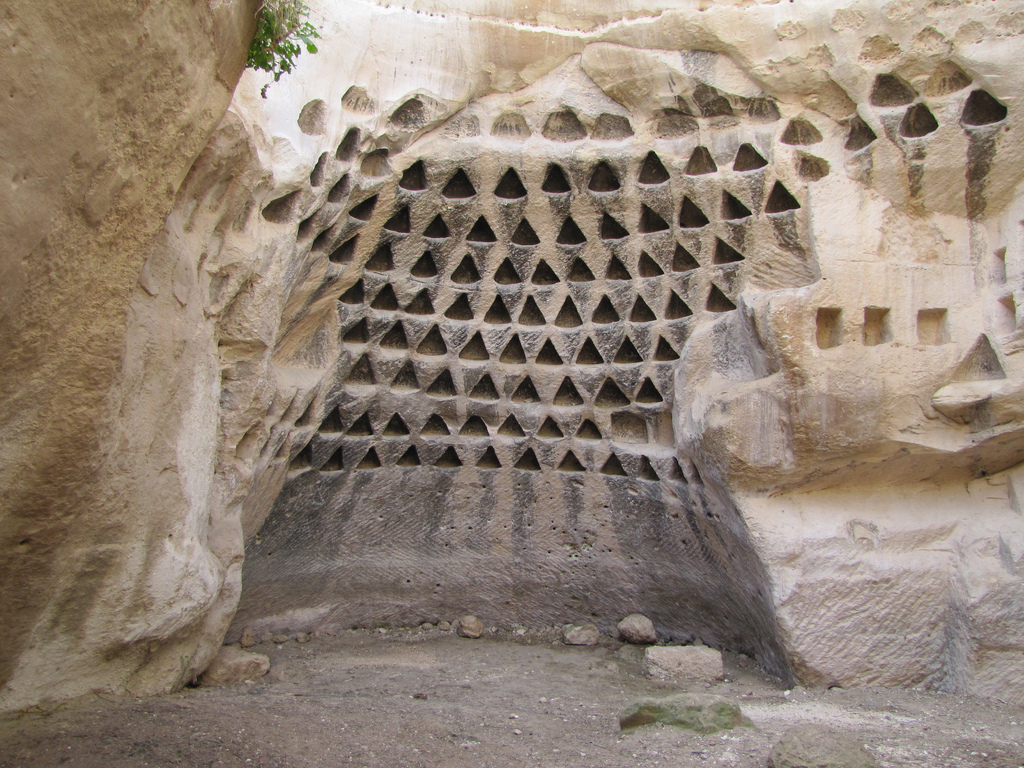
In the Beit Guvrin area several series of large caves dug into soft rock were found. There were several theories about their original use, for ritual burial, for growing pigeons to be used for ritual sacrifice, or for raising pigeons for fertilizer production. One such cave had been covered by an earthquake close to the time of its original usage and had no signs of secondary usage; neither ashes nor pigeon droppings were found in it.
- “Bet Guvrin National Park”. Israel National Parks. Archived from the original on 2016-10-18. Retrieved 2016-10-14.
- “The Land of 1000 Caves”. israel21c.org. 2014-09-03.
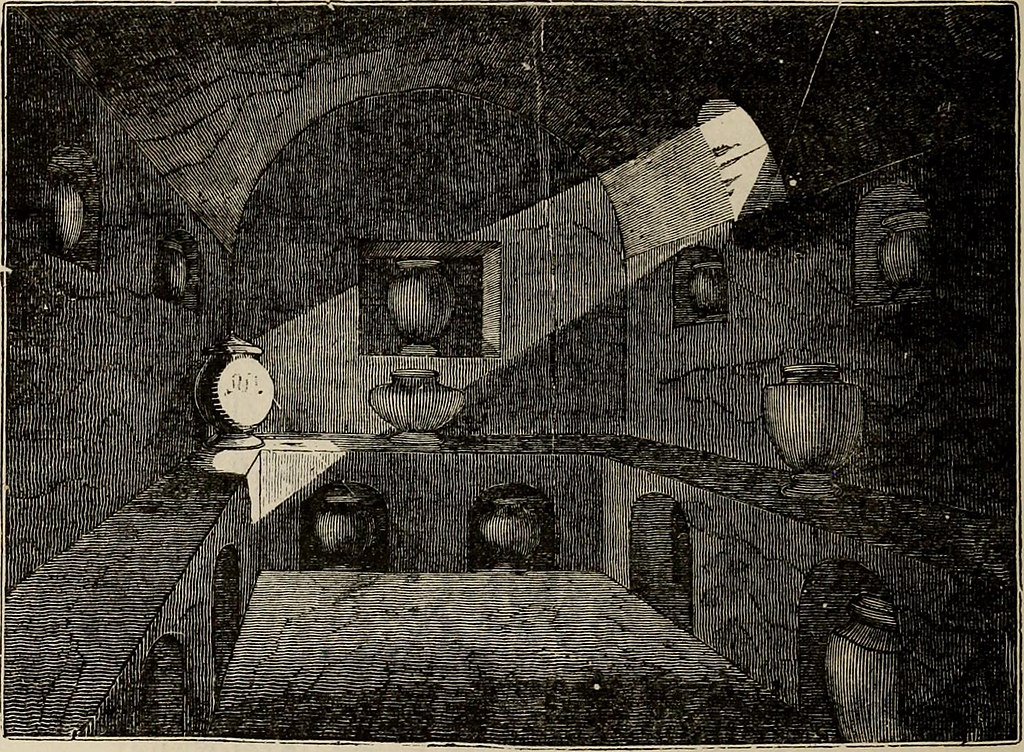
Text Appearing Before Image:
SEPULCHRAL URN. 112 HANDBOOK OF ARCHEOLOGY.
in years, months, and days,—the name of the parent, freedman,or of the friend who raised the monument over the tomb of thedeceased. Frequently the body was placed in a sarcophagus, or marble coffin,with similar inscriptions ; a very remarkable specimen of this kindis the celebrated sarcophagus of Scipio, found in the tomb of theScipios, at Home. Under the Antonines sarcophagi were frequentlyused. They were embellished with ornaments and elaborate basreliefs. The ashes of the bodies were enclosed in cinerary urns, whichwere composed of various materials, and were varied in form,with or without inscriptions. The urns of the same familywere sometimes deposited in a place prepared for that purpose,generally below the level of the ground. Its interior walls werepierced with several stories of arched niches, in each of which one
Text Appearing After Image:
COLUMBARIUM.
or several urns were placed. This is what the Romans called acolumbarium, a name derived from the likeness of the niches in thewalls to pigeon holes.* When the deceased, having been killed inbattle, or having died at sea, did not receive the honours of scpul- * There are several of these columbnria at Rome. The most remarkable are,the columbarium in the Vigna Codini, ou the Appiau way; and the colnmbnrinmin the Villa Doria.
TOMBS.
113 lure, a cenotaph, or empty tomb, was raised to him with the cere-monies regulated by law; these cenotaphs bore the same ornamentsas the sarcophagi and tombs. The place appointed for tombs wasgenerally by the side of roads ; and though they were not allowedto be constructed within the city, there was no restriction as totheir approaching close to the walls. Accordingly we find that mostof the roads leading out of ancient towns are lined with tombs, aninstance of which we have at Pompeii, where the street of the Note About Images Please note that these images are extracted from scanned page images that may have been digitally enhanced for readability – coloration and appearance of these illustrations may not perfectly resemble the original work.
See also
References
- ^ “Definition of ‘columbarium'”. Collins English Dictionary. HarperCollins Publishers. Retrieved 8 February 2019.
- ^ Toynbee, J M C (1971). Death and Burial in the Roman World. Johns Hopkins University Press. pp. 113–118.
- ^ Ancient Roman underground columbariums included: Columbarium of Statilii, Columbarium of Volusii, Columbarium of Livia, Columbarium of Pomponius Hylas, Columbarium of Lucius Arruntius, Columbarium of Iunius Silanus, Columbarium of Nero Claudius Druscus, Columbarium of Marcella, Columbarium of Carvilii, Columbarium of C. Annius Pollio, Columbarium of Caecilii, Columbarium of Passienii, Columbarium of Bruttii, Columbarium of L. Caninius Gallus, Columbarium of L. Abucii, Columbarium of Q. Sallustii. Further reading in Pavia, Carlo. Guide to Underground Rome: From the Cloaca Maxima to the Domus Aurea: the Most Fascinating Underground Sites of the Capital. English translation by Darragh Henegan. Rome: Gangemi, 2000. ISBN 88-7448-994-3
- “Bet Guvrin National Park”. Israel National Parks. Archived from the original on 2016-10-18. Retrieved 2016-10-14.
- “The Land of 1000 Caves”. israel21c.org. 2014-09-03.
External links
Wikimedia Commons has media related to Columbaria.


Leave a Reply